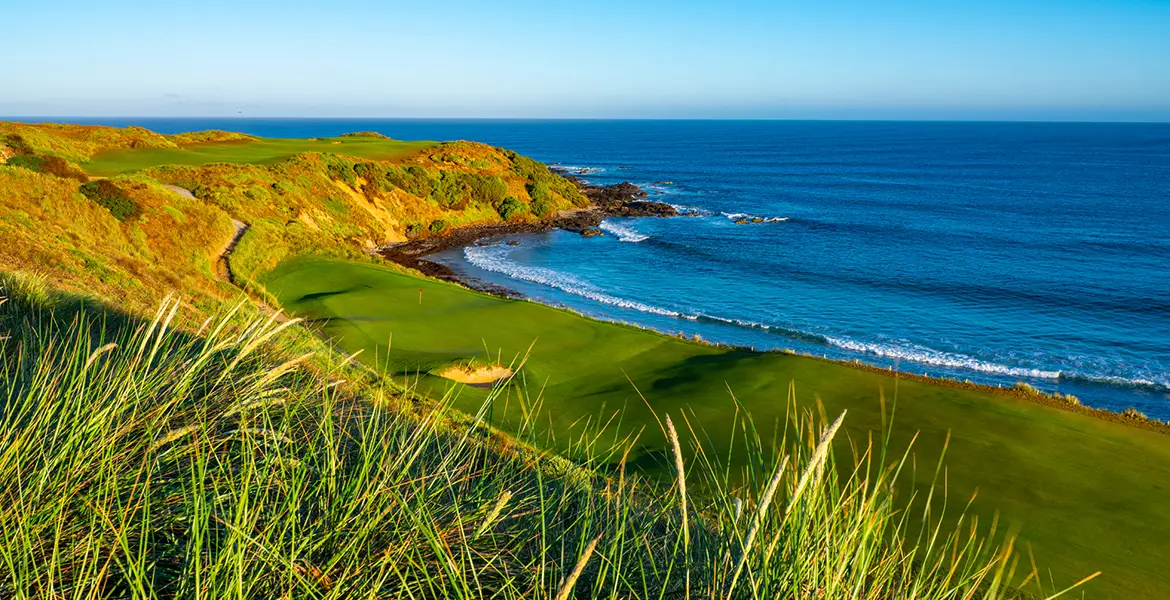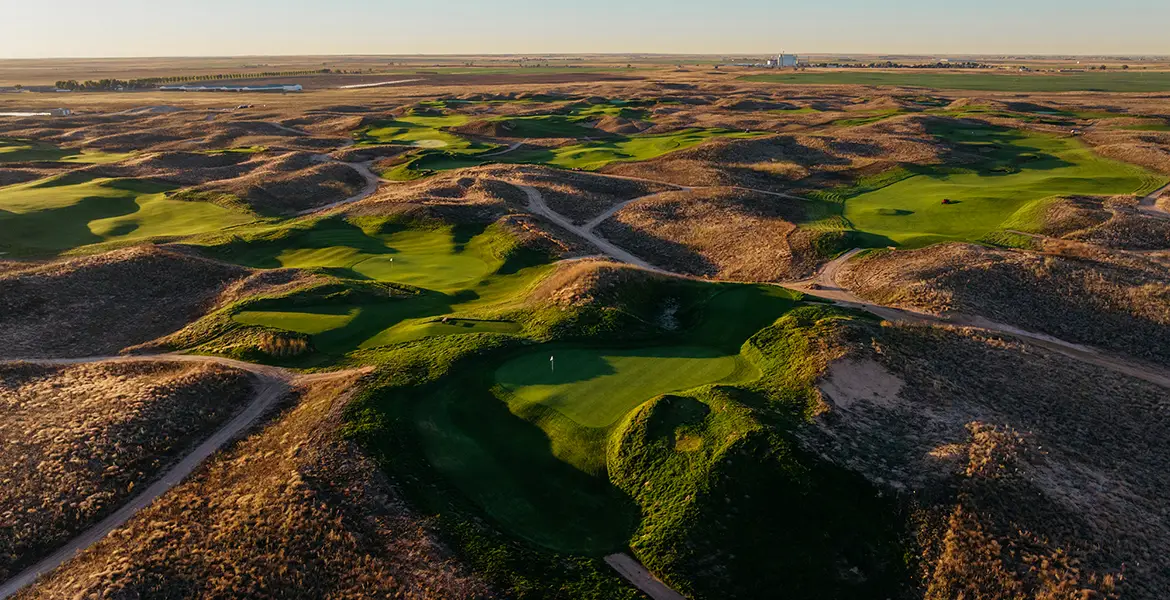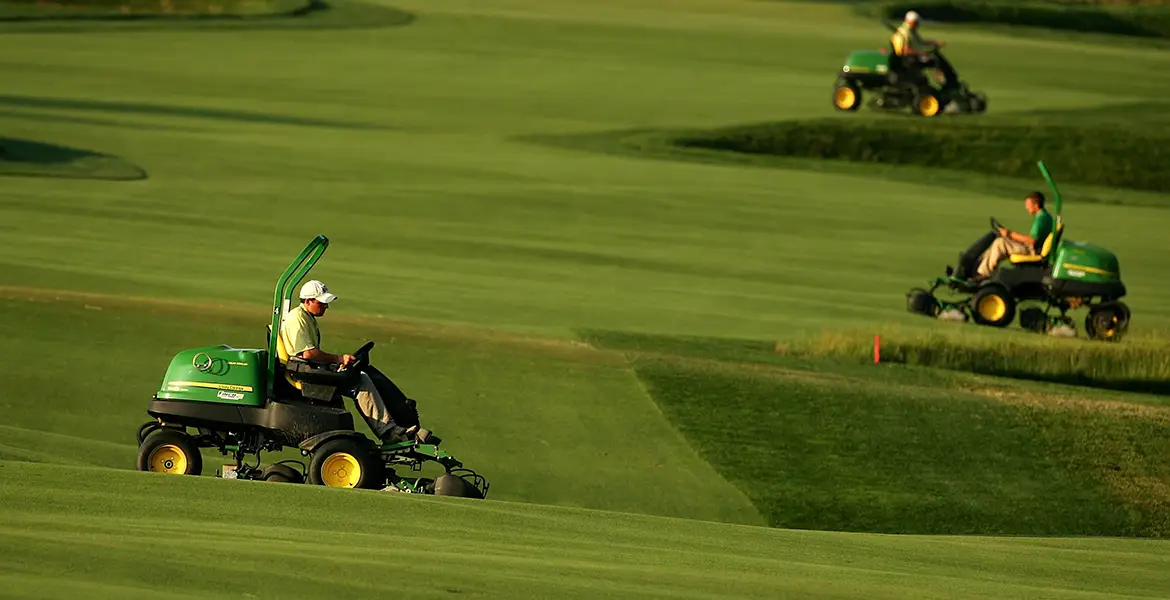Gutzon Borglum had 29 from which to choose when he began chiseling the heads of U.S. Presidents into the granite at South Dakota’s Mount Rushmore in 1927. There are something like 39,000 golf courses in the world and, conservatively, 30,000 clubhouses (some clubs/facilities own two or more courses while some share premises with other clubs). Picking four from 29 is a lot easier than selecting the greatest quartet from 30,000.
Where do you even start, and what criteria do you use? Does the size of the building matter? Are its architectural features more important than the dimensions? Is it attractive or merely functional?
Besides the bricks and mortar (or steel and glass), what about comfort and conviviality? It’s likely the majority of golfers would rather enjoy a post-round libation in an intimate but unremarkable clubhouse bar that few people know about but where spirited, lively, and cheerful chatter fills the room, than in a grand, commodious clubhouse where the occupants stand on ceremony and the formality can be overbearing.
That said, this is a golf clubhouse, not a frat house. There should be some propriety and a few rules.
And need its hallways and corridors be lined with photographs, portraits, and memorabilia portraying great moments in the club’s history and even the game itself? To be a nice clubhouse—one where you’re very happy to spend some time with friends enjoying a burger and a beer—then no, the portraits and display cabinets aren’t very important. For a clubhouse to be one of the four greatest though, then yes, it probably needs a good amount of that sort of thing.
Each of us has our own favorite clubhouse—a place where we feel comfortable, welcome, and a part of something. But are those places worthy of being on Mount Rushmore?
These four probably are…
Royal and Ancient—St. Andrews, Scotland
For some, the neo-classical sandstone ashlar building (originally a single-floor H-plan structure, but now a three-story rectangular construction) designed by George Rae and opened in 1854, 100 years after the Society of St. Andrews Golfers (later the Royal and Ancient Golf Club) was founded, is probably a little too grand and imposing. It might put them more in mind of a museum, palace, or state library than a golf clubhouse, and is somewhere important-looking people observing a dress code and sat at another table gesture for you to hush your conversation.
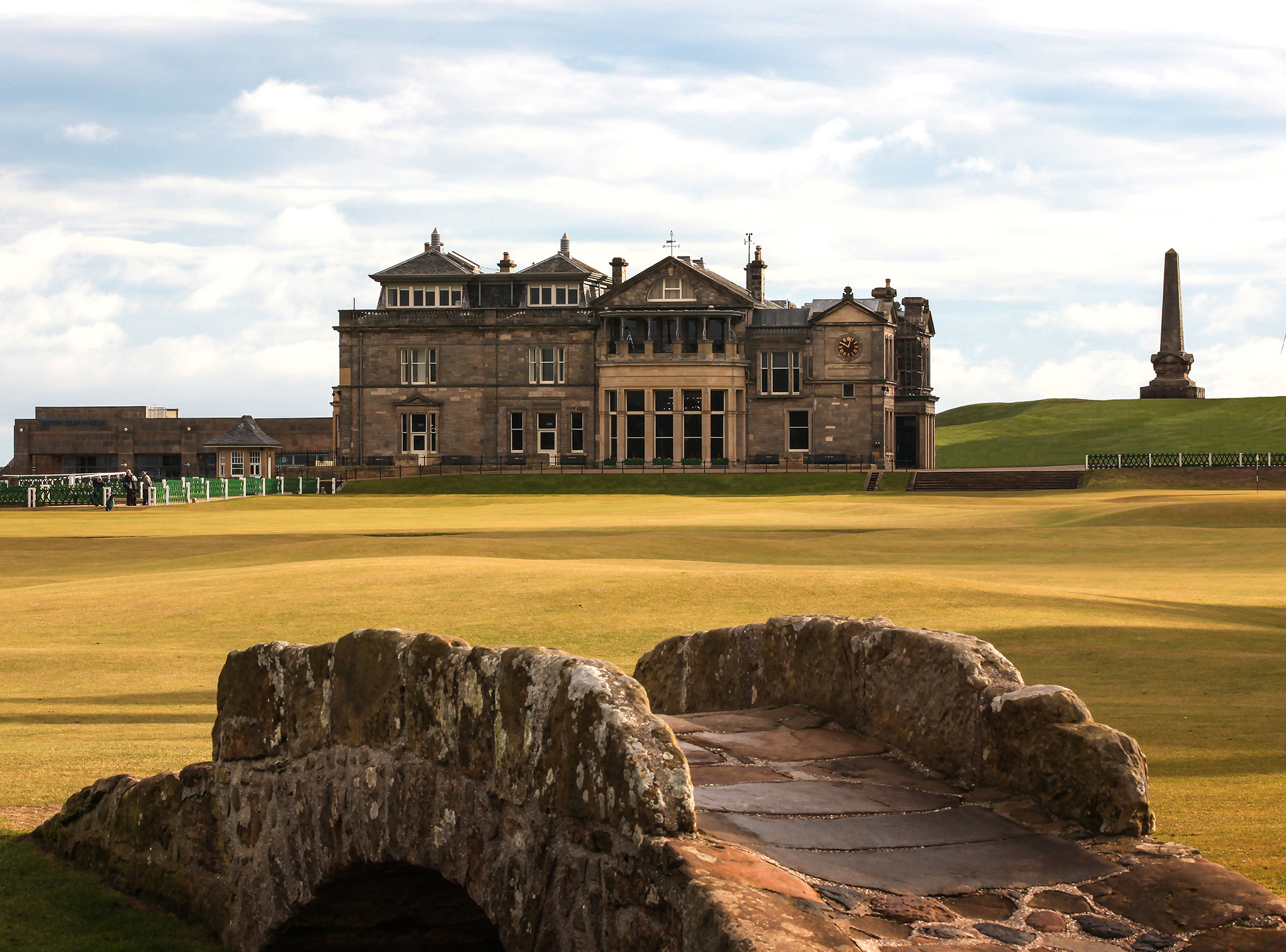
Conversations with R&A members over the years suggest that isn’t actually the case. Yes, they are obviously aware of the significance of the building, what’s inside it, and its place in the game. And an appropriate measure of civility and decorum are ever-present. But there’s a healthy amount of more casual and lighthearted discourse, too. It’s certainly not all forced silence, stifling, and suppression.
This is where the original Claret Jug, first won by Tom Kidd in 1873, is kept, as well as the Challenge Belt, awarded to the winner of the Open Championship from 1860 to 1870. Clubs belonging to Old Tom Morris, Young Tom Morris, Jamie Anderson, and other Open Championship greats are displayed here. The game’s Rules are decided here for the 61 million golfers in the world outside the USA and Mexico. The large canted window of the Big Room (originally the Large Hall) looks out onto the 1st and 18th holes of the Old Course, and the office where Mark Darbon serves as Secretary of the Royal and Ancient Golf Club and Chief Executive of the R&A opens onto a balcony where some of the game’s greatest players have shared stories and enjoyed what is perhaps the greatest view in the game.
Augusta National Golf Club—Augusta, Ga.
On April 10, 2022, an amazingly conceived and coordinated drone tour of the Augusta National clubhouse appeared online and millions of golfers all around the world got to peruse an interior they never thought they’d see. And even though it lasted only two minutes and 25 seconds and we got to enjoy it thanks to a small video camera attached to a discreet flying machine, it was still deeply, deeply satisfying.
The inside of the mid-19th century Greek Revival/Victorian Plantation House was every bit as elegant and graceful as we’d always imagined. The photos, portraits, and displays confirmed this was a building with gravitas and a club where some very important moments in golf’s history have taken place while the couches, chairs, writing desks, lights, fireplaces, and stairways had just the right level of style and refinement. You knew you were somewhere very special, but it was subtle, not showy… except for the large, plinth-mounted, silver model of the clubhouse in the lounge perhaps (the original, stay-in-the-clubhouse, mother of the Masters trophy).
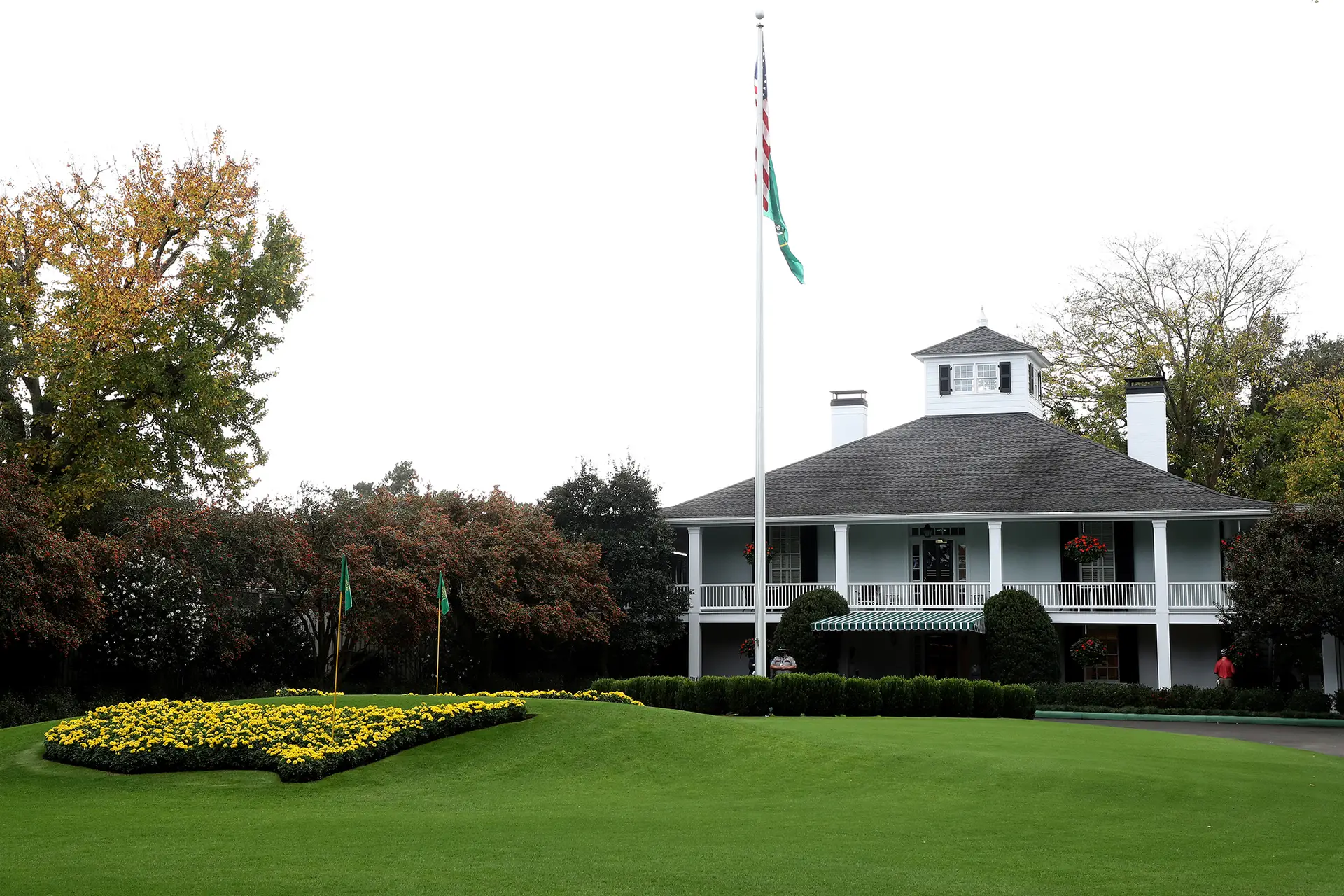
Construction of the building began in 1854 (yes, the same year that the Royal and Ancient clubhouse opened) led by Irish-born indigo farmer Dennis Redmond, who purchased 315 acres outside of Augusta where he grew fruit trees as well as indigo plants. He called the property Fruitland Manor. Later, Redmond sold a 50 percent stake in the business to Belgian horticulturalist Louis Berckmans and his son, Prosper. In 1858, the Berckmanses became sole owners and completed work on the house.
Augusta National Chairman Clifford Roberts and Olmsted Brothers, who landscaped the grounds, disliked the building and wanted it razed. The club’s early financial concerns prevented this, however—not a bad thing, perhaps, given how beloved the clubhouse has become.
Muirfield (Honourable Company of Edinburgh Golfers)—Gullane, Scotland
As with previous Mount Rushmore articles (course architects, golf writers, seaside courses, mountain courses, greens), the first two, maybe three, selections seem to be universally popular while the last one or two create some doubt and discussion—you could definitely argue their case, but not everyone’s going to agree and there will be plenty of alternative suggestions. So it will likely be with the third and fourth picks here.
The Honourable Company of Edinburgh Golfers (HCEG), originally built in 1891 and subsequently added to, is where some of golf’s great artifacts are housed. And, for a lot of golfers, the answer to the question, “Is it one of the four clubhouses you most want to step inside and spend a few hours in?” is a resounding “Yes!”
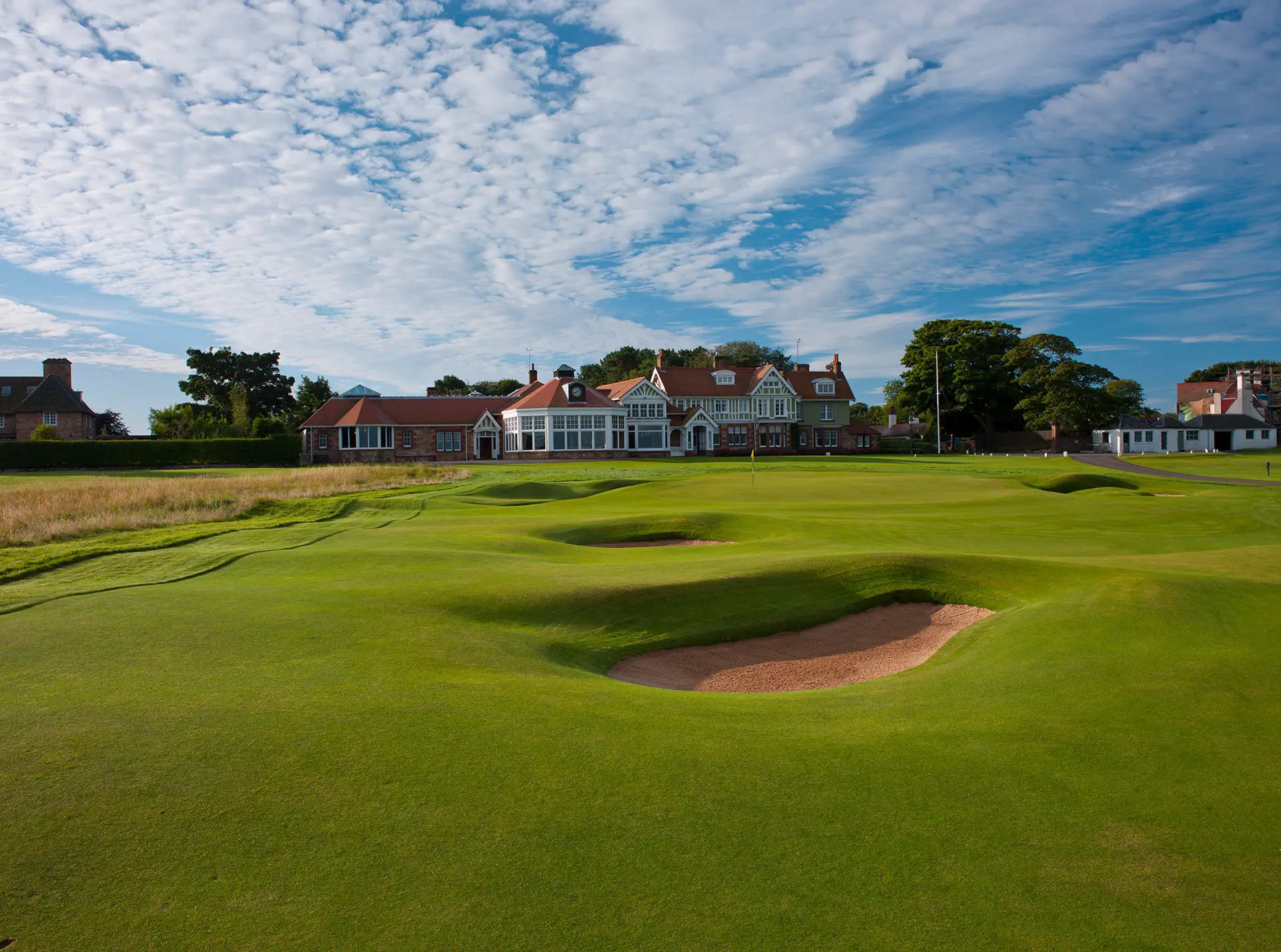
The HCEG, originally the Gentlemen Golfers of Leith, drew up golf’s first Rules—the “13 Articles & Laws in Playing at Golf” in 1744 for use in what is recognized as the game’s first officially organized tournament: The Silver Club.
The original handwritten Rules/Articles are kept in the National Library of Scotland, but a copy sits in a display case at Muirfield along with the original Silver Club and three subsequent Silver Clubs on which the club’s Captains attach a silver golf ball during the year of their captaincy. The Silver Clubs are housed in the Dining Room where a lunchtime plate of roast beef or bowl of Cullen Skink while sitting at the refectory tables makes the Muirfield clubhouse one of golf’s great places to be.
Oakmont Country Club—Oakmont, Pa.
Opened in October 1904 and designed by Edward Stotz who created some of Pittsburgh’s most notable schools, churches, and corporate buildings, the handsome Tudor-Revival clubhouse at Oakmont Country Club was meant to resemble a traditional Scottish farmhouse and cost $38,000 to build ($13,000 more than what was budgeted). A wonderfully old-school American clubhouse, the building has some narrow corridors and smaller rooms like the overnight accommodations on the third floor and the Fownes Library (named for the club founder Henry C. Fownes and his son William C. Fownes) as well as the larger communal dining rooms like the Champions’ Grill and Men’s Grill.
Two of the clubhouse’s most notable areas are History Hall down which display cases dedicated to each of Oakmont’s 10 U.S. Opens are located, and the men’s locker room (which famously has no air conditioning) where the benches have all the original spike marks (some probably put there by Bobby Jones, Jack Nicklaus, Arnold Palmer, Tiger Woods, Johnny Miller…) and even the new lockers are built with the same hideaway, inside, booze locker that the club’s original lockers featured.
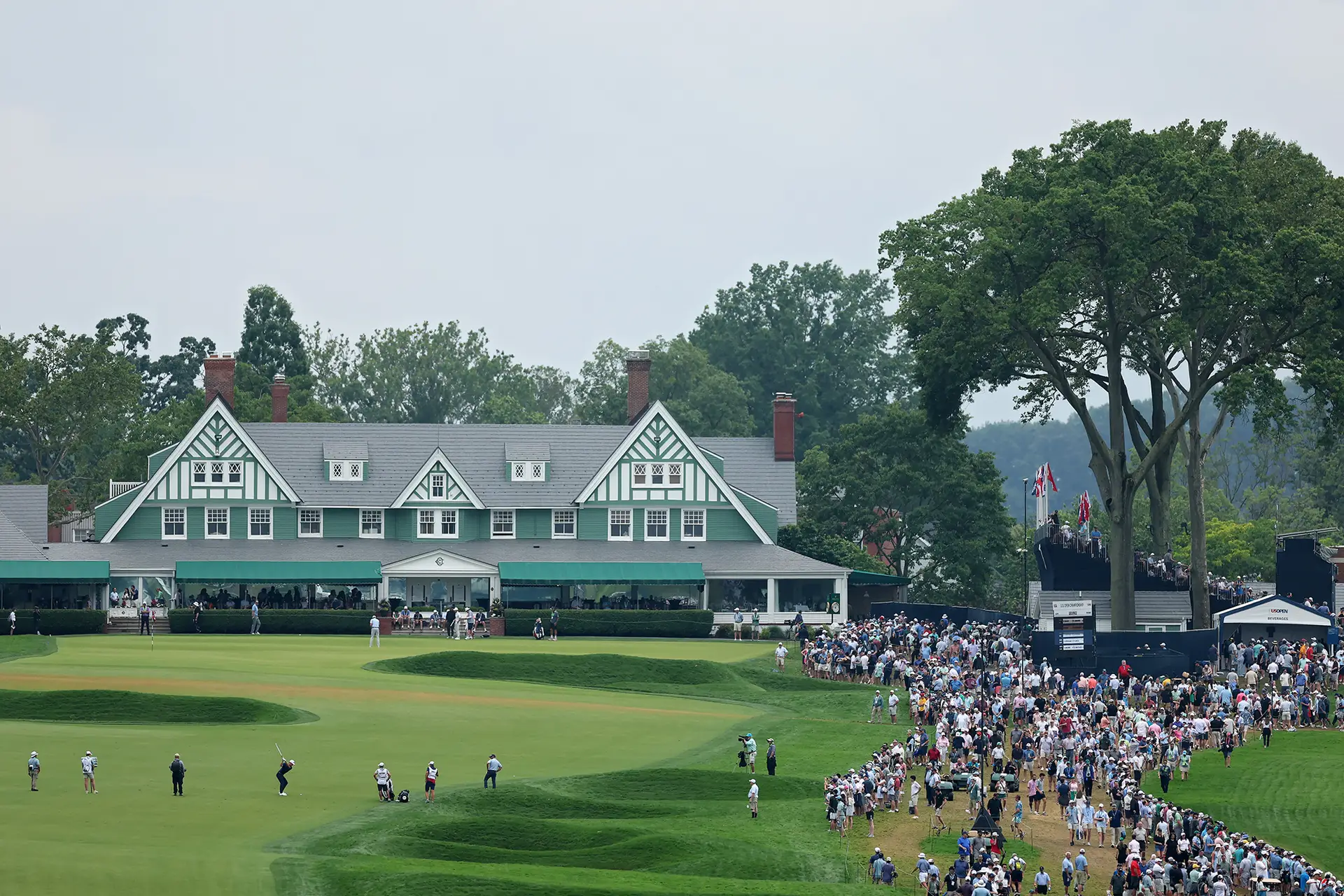
Honorable Mention
If the club is home to a highly ranked course, chances are it will have an equally great clubhouse. There’s far too many deserving of an honorable mention to list them all, so we’ll limit it to 15 in the U.S., five in the UK, and five from the rest of the world—getting us to the same “29” number that Gutzon Borglum considered when making his picks.
U.S.
Shinnecock Hills (N.Y.)
Congressional (Md.)
Old Town (N.C.)
Longue Vue (Pa.)
Shoreacres (Ill.)
Newport (R.I.)
Valley Club of Montecito (Calif.)
Bayonne (N.J.)
Baltusrol (N.J.)
Ridgewood (N.J.)
King Kamehameha (Hawaii)
The Bridge (N.Y.)
Medinah (Ill.)
Martis Camp (Calif.)
Winged Foot (N.Y.)
UK
Sunningdale (England)
Royal West Norfolk (England)
Nairn (Scotland)
Castle Stuart at Cabot Highlands (Scotland)
Royal Birkdale (England)
Rest of World
Whistling Rock (Korea)
South Cape Owners Club (Korea)
Royal Sydney (Australia)
Morfontaine (France)
Dubai Creek (Dubai)
Which clubhouse do you think deserves to be mentioned here? And which is your favorite clubhouse?


